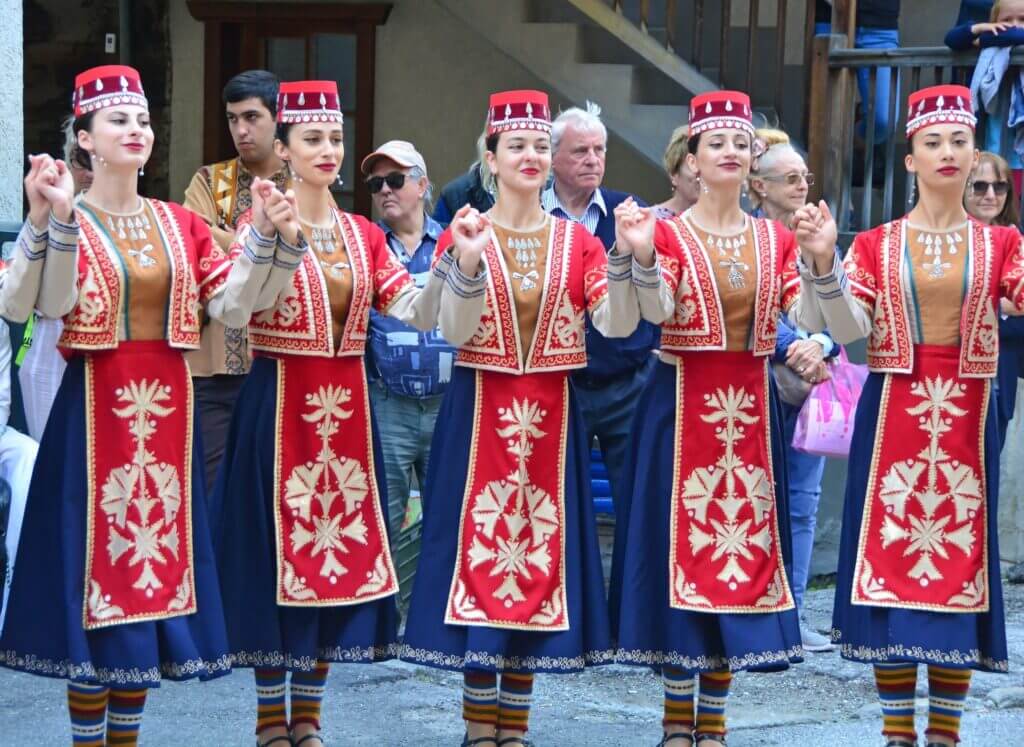Traditions and customs are cultural beliefs and practices that are passed from generation to generation. These traditions are often rooted within the history and geography in a specific region and may include social norms and religious rituals as well as artistic expressions and other forms cultural heritage. Let’s check out customs in different countries.
European traditions are distinctive in many ways. Europe’s rich cultural history has been shaped over centuries by political, economic, and social developments. This has resulted in a variety of customs and traditions that span different European countries and regions.
Their diversity is one of the most distinctive features of European traditions. Although there are common elements across Europe, each country or region has their own cultural identity. This can be seen in the diversity of languages, cuisines, artistic styles, and other cultural aspects that are found across Europe.
Another characteristic of European traditions are their long-lasting nature. Many European traditions and customs have been handed down over centuries and are deeply rooted within the history and identity the people who use them. This gives them a sense that they are connected to the past and provides continuity, an important part of European cultural identity. Marriage customs in different countries are very interesting.
25 strange customs and traditions around the world
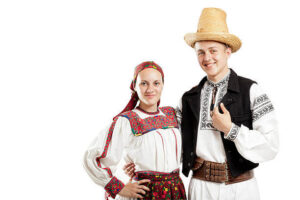 There are countless customs and traditions throughout Europe, each with their own unique history and significance. Some other examples of strange customs in different countries and traditions include:
There are countless customs and traditions throughout Europe, each with their own unique history and significance. Some other examples of strange customs in different countries and traditions include:
- Spain celebrates La Tomatina. This is a festival in which people throw tomatoes at one another.
- Surstromming is a Swedish custom that involves eating fermented herring.
- It is a tradition in Italy to throw dishes out of windows on New Year’s Eve.
- Germans hide a pickle under the Christmas tree and give a gift to the first child who finds it.
- It is a tradition in Scotland to celebrate Hogmanay (the New Year) with fireballs.
- Finland has a long tradition of husband-carrying races. In Finland, men carry their wives on the backs.
- To celebrate spring’s arrival in the Czech Republic, people light an effigy representing a witch every April 30th.
- It is a Norwegian tradition to eat lutefisk (a gelatinous fish dish).
- People in Bulgaria dance on hot coals during a festival called Nestinarstvo.
- For luck, Greeks throw pomegranates onto the ground during the wedding ceremony. This is one of the most interesting wedding customs in different countries.
- It is a French tradition to eat snails or escargot as a delicacy.
- The Netherlands celebrates Sinterklaas with blackface parades through the streets.
- On Christmas Eve in Ireland, people leave a loaf on the doorstep for the fairies.
- During Easter Monday celebrations in Poland, it is customary to pour water on one another.
- Romanians dress up as bears and dance during winter holidays.
- Festival do Alho in Portugal is a celebration where people beat each other with garlic flowers.
- To purify themselves, Russians jump in icy water to celebrate Epiphany.
- Icelanders celebrate Thorrablot with traditional Icelandic foods like fermented shark.
- People dress up as demons in Austria and parade down the streets during Krampusnacht.
- It is customary in Slovenia to eat potica (sweet bread filled with honey and nuts) during Christmas.
- Ukrainians decorate Easter eggs with elaborate patterns and designs.
- Denmark is known for smashing dishes on the doorsteps of their friends as a sign to show friendship and goodwill.
- Belgians celebrate Carnival by dancing and performing parades. They also throw oranges at one another.
- To celebrate St. John’s Eve in Serbia, people light bonfires then jump over them.
- Las Fallas is a Spanish festival that sees people build large papier-mache structures and then burn them.
It’s worth noting, that customs in different countries have unique definitions(some of the customs might be alike as traditions).
Gestures and customs in different countries
The dating scene in Europe is as diverse as the continent itself, with each country and culture having its own unique customs and traditions. From romantic boulevards in Paris to lively nightclubs in Berlin, the way people approach dating and relationships can vary widely. Some countries may have a more formal approach to courtship, while others may be more casual and relaxed. Let’s take a look at some of the dating customs and traditions in different countries of Europe.
You will shortly find out how the dating customs in different countries look like.
Dating customs in France
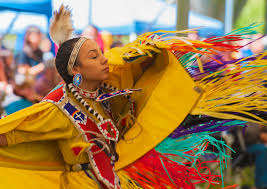 France is known for being a romantic destination, and the dating customs there reflect that. French couples often go on romantic walks along the Seine River or through the streets of Paris, and may share a kiss under the Eiffel Tower. In France, it’s also common for couples to exchange gifts and to celebrate their love on Valentine’s Day.
France is known for being a romantic destination, and the dating customs there reflect that. French couples often go on romantic walks along the Seine River or through the streets of Paris, and may share a kiss under the Eiffel Tower. In France, it’s also common for couples to exchange gifts and to celebrate their love on Valentine’s Day.
Dating customs in Italy
In Italy, dating customs are often centered around food and family. Italians love to cook and eat together, and a typical date may involve sharing a meal at a local trattoria or pizzeria. Italian couples also often take romantic walks through the historic streets of Rome or Venice, and may exchange love letters or poems.
Dating customs in Germany
In Germany, dating customs tend to be more reserved and formal. Couples may meet through mutual friends or at work, and may take things slow before becoming serious. It’s common for German couples to exchange small gifts or tokens of affection, such as flowers or chocolates. It’s completely normal if you find out, that people use different gestures in different countries.
Dating customs in Spain
In Spain, dating customs often revolve around nightlife and socializing. Spaniards enjoy going out to bars and clubs with friends, and may meet potential partners through these social activities. It’s also common for Spanish couples to exchange gifts and to celebrate Valentine’s Day. Customs in different countries regards dating are a lot different from Spain.
Dating customs in Sweden
In Sweden, dating customs can be quite casual and relaxed. Swedish couples often meet through online dating apps or social events, and may have a more egalitarian approach to relationships. It’s also common for Swedish couples to live together before getting married, and to split household chores and responsibilities equally. Even from this example, you can easily tell that traditions in different countries around the world are completely Divergent.
Traditions in different countries for Christmas
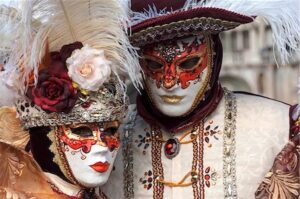 Christmas is one of the most important holidays in Europe, celebrated in various ways across the continent. While the origins of Christmas traditions vary depending on the country and region, the holiday is generally seen as a time for family, food, and gift-giving. In many countries, the Christmas season begins in early December and lasts until the Epiphany on January 6th. From colorful Christmas markets to traditional holiday foods, each European country has its own unique way of celebrating this festive time of year. Let’s take a look at some of the Christmas traditions in different countries of Europe.
Christmas is one of the most important holidays in Europe, celebrated in various ways across the continent. While the origins of Christmas traditions vary depending on the country and region, the holiday is generally seen as a time for family, food, and gift-giving. In many countries, the Christmas season begins in early December and lasts until the Epiphany on January 6th. From colorful Christmas markets to traditional holiday foods, each European country has its own unique way of celebrating this festive time of year. Let’s take a look at some of the Christmas traditions in different countries of Europe.
If you want to visit most of these European countries starting from next year, make sure to check out new ETIAS regulations. European Travel Information and Authorization System, or ETIAS for short, is a new security measure of the EU, set to come into force from 2025. The main goal of the system is to enhance EU’s efficiency against external security and epidemiological threats by pre-screening visitors before their arrival.
Christmas traditions in Poland
In Poland, Christmas Eve is the most important day of the holiday season. Families come together to share a meal, exchange gifts, and sing Christmas carols. Traditional Polish foods like pierogi, carp, and borscht are often served, and it’s customary to leave an extra place at the table for an unexpected guest or the Baby Jesus.
Christmas traditions in Germany
Germany is famous for its Christmas markets, which feature festive stalls selling traditional treats like gingerbread, roasted chestnuts, and glühwein (mulled wine). Many German families also decorate a Christmas tree with glass ornaments and tinsel, and children leave out their shoes on December 6th to be filled with candy and small gifts by St. Nicholas.
Christmas traditions in Italy
In Italy, Christmas is celebrated with a range of unique traditions depending on the region. Also, in Rome, the Pope gives a special Christmas Day blessing from the balcony of St. Peter’s Basilica. In Naples, locals set up elaborate nativity scenes in their homes and churches. And in the Alpine regions, families may go on a torch-lit procession through the snowy streets.
Christmas traditions in Iceland
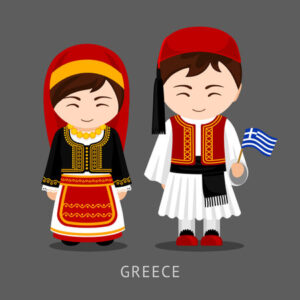 In Iceland, the holiday season is marked by the 13 Yule Lads, mischievous trolls who leave small gifts or rotten potatoes in children’s shoes in the 13 days leading up to Christmas. Families also gather to enjoy traditional Icelandic dishes like fermented skate and smoked lamb, and may take a dip in a natural hot spring on Christmas Day.
In Iceland, the holiday season is marked by the 13 Yule Lads, mischievous trolls who leave small gifts or rotten potatoes in children’s shoes in the 13 days leading up to Christmas. Families also gather to enjoy traditional Icelandic dishes like fermented skate and smoked lamb, and may take a dip in a natural hot spring on Christmas Day.
Christmas traditions in Spain
In Spain, the holiday season is celebrated with a range of unique traditions. One of the most famous is the Three Kings parade, where elaborately costumed characters throw sweets and small gifts to children in the streets. In Catalonia, locals decorate Christmas trees with miniature figures called caganers, which depict famous personalities, politicians, or even religious figures in the act of defecation. And in Andalusia, people enjoy traditional foods like mantecados (shortbread cookies) and polvorones (almond sweets).
Overall
As there are only 5 listed in our case, It’s simple to say that customs in different countries might be way more interesting, because all the countries show their unique cultures, which leads to the fact, that traditions in different countries all around the world are completely divergent.
Different gestures in different countries
Body language and nonverbal communication are an important part of communication in Europe, as in many other parts of the world. From the way we use our hands and facial expressions to the space we keep between ourselves and others, body language can convey a lot of information about our emotions, intentions, and cultural background. While some gestures are universal, others can be specific to certain countries or regions. Understanding these cultural nuances can help avoid misunderstandings and foster more effective communication. Let’s take a closer look at some of the different gestures in different countries of Europe.
As mentioned above, ETIAS is going to change a lot of things when it comes to travel. According to ETIAS requirements, the application process will be very smooth and straightforward. First, you need to fill out online application form and answer some general questions about yourself. This will take you around 15 minutes.
Greeting customs in France
In France, it’s customary to greet people with a kiss on each cheek, known as “la bise.” The number of kisses can vary depending on the region, but two is the most common. This is typically done between close friends and family members, but can also be used in more formal settings.
Hand gestures in Italy
I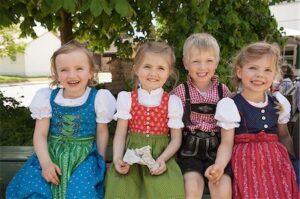 talians are known for their expressive use of hand gestures, which can convey a wide range of emotions and meanings. For example, rubbing the fingers together can signify money or a financial transaction, while a hand gesture that involves pinching the fingers and shaking the hand can mean “I don’t know” or “It’s nothing.”
talians are known for their expressive use of hand gestures, which can convey a wide range of emotions and meanings. For example, rubbing the fingers together can signify money or a financial transaction, while a hand gesture that involves pinching the fingers and shaking the hand can mean “I don’t know” or “It’s nothing.”
Eye contact in the UK
In the UK, direct eye contact is considered a sign of respect and honesty. However, too much eye contact can be seen as confrontational or aggressive, while avoiding eye contact can be interpreted as rude or untrustworthy. It’s important to strike a balance and adjust to the situation. It really shows how important can the customs in different countries around the world be like.
Silence in Scandinavia
In Scandinavia, silence is often valued as a sign of thoughtfulness and respect. Pausing before answering a question or taking time to reflect is seen as a positive trait. However, in other cultures, this can be interpreted as hesitation or uncertainty. As for Scandinavia, apart from the being silent and respectful, it’s a must to mention, those are one of the rarest countries with unique cultures.
Thumb gestures in Greece
In Greece, making an “OK” gesture with your thumb and forefinger is considered a vulgar gesture. Instead, use an open hand with fingers extended to indicate agreement or approval. Similarly, making a fist with your thumb between your index and middle finger is considered a curse.
Greece is a country to visit and explore as it offers various type of gestures and customs unlike in different countries.
Food customs in different countries
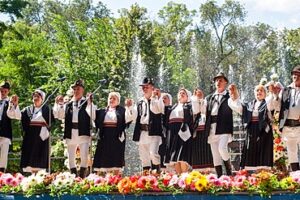 Culture is incomplete without food. It can be very different from one country to the next. Different cooking styles, ingredients and cuisines reflect the history, geography and traditions of each region. You can also find food customs that include everything from holiday traditions and special occasions to mealtime rituals and table manners. Europe is home to many unique food traditions. Italy is well-known for its pizza, pasta, wine, and wine. Germany, however, is famous for its sausages, beer, and other foods. France is known for its pastries, cheese, and Spain for its tapas and paella.
Culture is incomplete without food. It can be very different from one country to the next. Different cooking styles, ingredients and cuisines reflect the history, geography and traditions of each region. You can also find food customs that include everything from holiday traditions and special occasions to mealtime rituals and table manners. Europe is home to many unique food traditions. Italy is well-known for its pizza, pasta, wine, and wine. Germany, however, is famous for its sausages, beer, and other foods. France is known for its pastries, cheese, and Spain for its tapas and paella.
There are many food customs that vary across countries. Different regions and cities have their own traditions and specialties. Spain and Italy are two examples of countries where the main meal is eaten in the evening. In other countries like the UK or Germany, hot meals are more common at lunchtime. It is considered impolite in some countries like France and Italy to eat before everyone has had their meal. In others, such as Spain, it is customary to share the dishes and have them passed around the table.
Holidays and special occasions are often marked by food. Many countries have their own traditions and cuisines. In the UK, a roast turkey dinner is a tradition, and in Spain twelve grapes are eaten at midnight to bring good fortune. It’s a great way for people to connect and experience different cultures.
Cultural customs examples
Cultural customs are practices and traditions that are passed down from one generation to the next. They are part of a society’s cultural identity. Here are some examples of cultural customs from all over the globe:
- Tea ceremonies in Japan: The Japanese tea ritual, also called “chanoyu,” involves the preparation and serving green tea to guests at a traditional teahouse. This ceremony promotes harmony, respect, tranquility, and peace.
- Holi festival in India: Holi, also known as “festival of colours”, is a Hindu festival that takes place in spring. To celebrate spring’s arrival and promote unity and forgiveness, participants throw colored powder and water at one another.
- Running of bulls in Spain: This traditional tradition involves participants running in front of a group bulls as they run through the streets of Pamplona. This custom honors Saint Fermin, who is the patron saint of the town, and it is a symbol for strength and courage.
- Midsummer celebrations, Sweden: Midsummer in Sweden is a traditional holiday that occurs in June. This celebration includes dancing around a maypole and traditional food like potatoes and herring. This holiday celebrates the start of summer and the long days of sunshine.
- The fourth Thursday in November is Thanksgiving in the United States. Thanksgiving is a holiday that celebrates family, community and gratitude. It includes traditional turkey, stuffing and pumpkin pie.
These are only a few examples from cultural customs around the globe. There are many others that reflect the richness and diversity of human culture.
Overall
Customs and traditions can vary widely from country to country and even from region to region within a country. Therefore, exploring and learning about different customs and traditions can be a great way to gain a deeper understanding and appreciation of other cultures, and can help to promote cross-cultural understanding and respect.
It’s important to approach these customs and traditions with an open mind and a willingness to learn and understand, and to be respectful of different cultural practices, even if they may seem unfamiliar or unusual at first. By taking the time to explore and learn about different customs and traditions, we can gain a greater appreciation for the diversity and richness of human culture, and can build stronger connections with people from different backgrounds and experiences.
